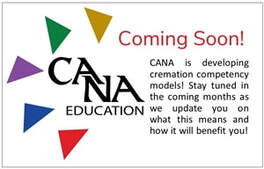|
Do you have a budget for training and development? If you do, is it only for mandatory training required for maintaining licensure? If you answered no to the first question, or yes to the second question, read on. Sadly, most people only pay for continuing education classes only because they have to. As long as they have the credits they need, that’s all that matters. In that case, they look for the bare minimum – something that offers the least amount of work for the most amount of credits at the cheapest rate. You all know what I’m talking about. Those $50 online classes that get you 4 hours of continuing education credit. Four hours and $50 later, you haven’t actually continued your education or developed professionally because few people learn anything from a “class” where you read endless pages of content, or “watch” boring narrated slides while you’re really catching up on CANA’s blog. But what if the money spent on that required continuing education could actually help boost your bottom line? Successful companies know that training and development (T&D), as well as succession planning and anything related to workforce development, should be an integral part of your business strategy. Your people are your most important asset, so they should receive the time, energy and investment that shows it. workforce development What do successful companies do? They make a Competency Model – they outline all of the knowledge, skills and abilities (KSAs) a person needs to be successful in a given job or job area. Training dollars are focused on filling the gap between the skills employees have and those they need; since the competencies are tied to business goals, you are spending money on personnel (read: professional) development that will directly impact the bottom line. These competency models are also used in succession planning and career growth. When you have them available for all positions, employees know what is expected of them, especially if they want to be promoted or move to a different position in the company. When hiring new employees, the models help you identify what training you may or may not need to provide if you hire a particular person return on investmentIf improving your bottom line isn’t enough motivation to focus on T&D, maybe keeping qualified employees will. Are your employees getting poached by other firms because of the industry’s talent shortage? Continued opportunities for development and advancement keeps employees engaged and reduces turnover. What about the retirement of the Baby Boomers? It’s no secret that a skills gap exists between what employers need and the skills many of our future employees have. If you’re facing the looming retirement of experienced staff, getting new employees in and up to speed quickly is essential. That means starting now with comprehensive succession and T&D plans. “But wait!” you say. “Paying for classes is one thing. But the travel expenses, lodging and food, in addition to the lost work time, it all adds up!” Yes, it does, and I have several responses. First, the long-term payoff of having well-trained staff more than covers the classes, the travel expenses and the lost work time (or it should, if you choose quality training programs). Plus, the commitment you demonstrate to your employees makes them feel valued and that you are invested in their future. Second, properly trained and qualified staff generally leads to lower legal risk, which is priceless – ask anyone who has been sued. So how can you provide quality education in a more budget friendly way? Online programs are a great option since they eliminate the travel. quality online educationI earned my Master’s Degree in 2005 and the program was entirely online; it was cutting edge for its time. I remember having to watch video lectures every week for class, mailed to me on VHS tapes, and promptly falling asleep on the couch within 20 minutes. BORING! Don’t get me wrong, the program was tough, and I put the work in to prove I was worthy of the degree (just ask me about my work product sample!). But studies show, and my personal experience agrees, an interactive online learning experience is more effective. It wasn’t available back then, but we’re capable of this now, 13 years later, with all the technology advancements. Unfortunately, if you want to take quality online education that actually increases the bottom line, you may struggle to find it. Remember that $50 class for four hours of credit? That’s not the quality I mean. Research shows that lectures aren’t effective for adults to learn, yet it continues to be the delivery mechanism of choice—especially for online courses—because it’s easy for those putting the presentation together. Truly valuable online opportunities can be rare. Maybe that’s why there are still states, like Pennsylvania, that don’t accept continuing education credits obtained through online or distance learning methods. They know that there haven’t been many—if any—truly effective online programs available. CANA is changing that. CRITERIA Though it can be costly and time intensive and requires a unique skill set to develop, the use of online education that is designed following best practices is now an expectation within the most successful companies. Unfortunately, there are still many industries that lag behind in this area—ours being one of them. This is why it’s important for CANA to set the standard. Our association needs to show what quality online continuing education looks and feels like. But how do you know if you are investing in quality education, especially when it’s offered online? There are three key criteria to consider before purchasing an online course.
ask for helpNot sure how to get started developing a defined professional development plan for your employees? I’d love to talk to you. Call 312-245-1077 or email me [email protected] and I'll work with you to achieve your goals.
Comments are closed.
|
The Cremation Logs Blog
Cremation experts share the latest news, trends, and creative advice for industry professionals. Register or log in to subscribe and stay engaged with all things cremation. Categories
All
Archives
July 2024
|
|
